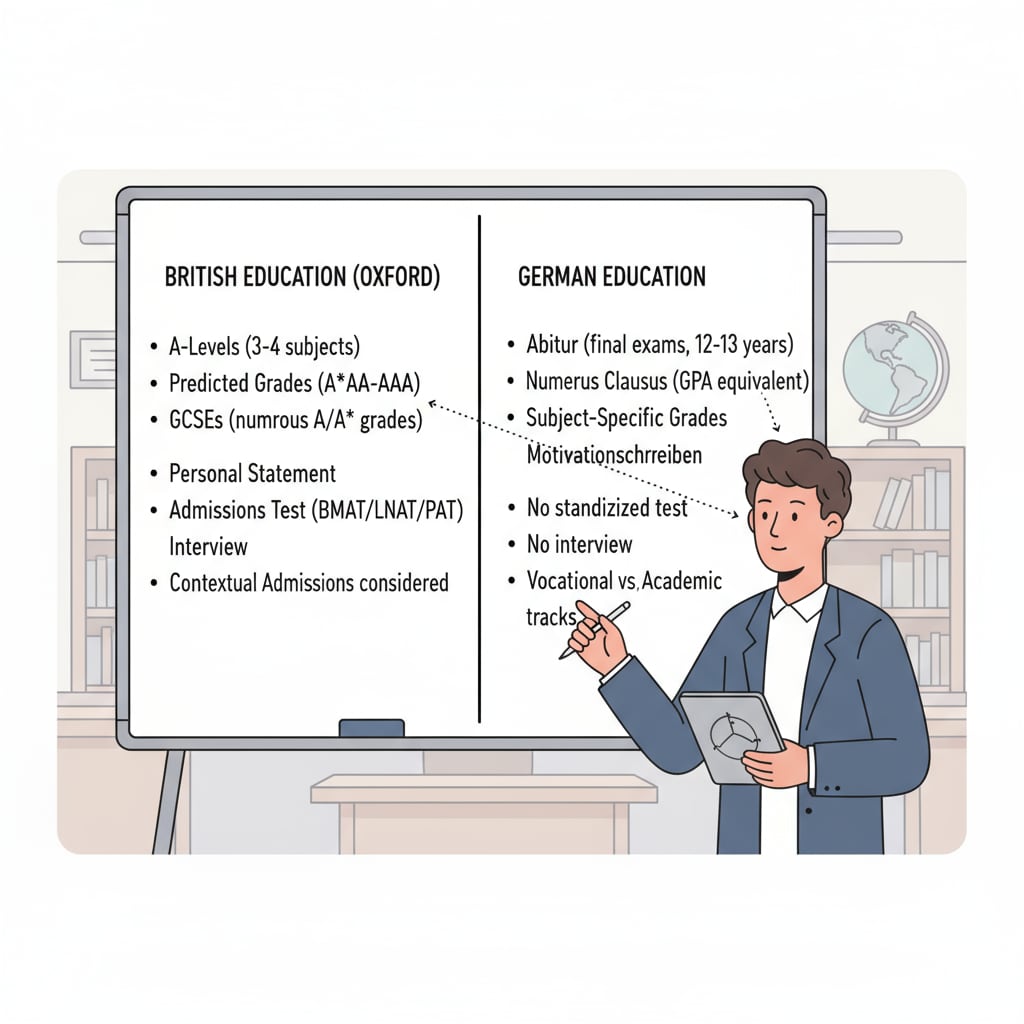The conflict between German education regulations and the requirements for applying to the University of Oxford, especially in terms of predicted grades, has long been a hurdle for German students. This issue not only affects individual academic pursuits but also highlights the disparities between different educational systems.

As we explore this complex situation, it’s essential to understand the root causes and potential solutions.
The Application Hurdles for German Students
German students, particularly those from Bavaria, often find themselves at a crossroads when applying to Oxford University. The British university places significant emphasis on predicted grades as a crucial part of the application process. However, German education regulations have different mechanisms in place. For example, the German system focuses more on continuous assessment throughout the academic years rather than relying heavily on predicted grades. According to Wikipedia’s entry on the German education system, the comprehensive evaluation in Germany aims to provide a more holistic view of a student’s academic capabilities. This difference creates a gap between what Oxford expects and what German students can readily provide.

The Structural Conflict Analyzed
The structural conflict between German education regulations and Oxford’s application requirements is multi-faceted. German schools are bound by strict regulations regarding the release of academic information, including predicted grades. In contrast, Oxford requires detailed and accurate predicted grades to assess a student’s potential for success at the university. As a result, German students may struggle to meet these expectations. Britannica’s article on education in the UK points out that the British higher education system often uses predicted grades as a key indicator for admission. This misalignment in requirements can be a significant setback for German applicants.
Another aspect of the conflict is the difference in the grading scales and assessment methods. German grades are based on a different scale compared to the British system, and the way academic performance is measured also varies. This makes it challenging for German students to accurately translate their academic achievements into a format that meets Oxford’s standards.
Possible Solutions for the Dilemma
One possible solution is for German schools and educational institutions to collaborate more closely with Oxford. This could involve creating a standardized process for providing predicted grades that aligns with Oxford’s requirements while still adhering to German education regulations. Additionally, students could seek the help of educational consultants who are familiar with both the German and British education systems. These consultants can provide guidance on how to present their academic records in the best possible light.
Another approach could be for Oxford to adapt its requirements slightly to accommodate the unique aspects of the German education system. This might involve considering alternative forms of assessment or placing less emphasis on predicted grades alone. By doing so, Oxford can open its doors to a more diverse range of talented German students.
Readability guidance: In this article, we have explored the complex conflict between German education regulations and Oxford University’s application requirements. By highlighting the hurdles, analyzing the structural conflict, and suggesting possible solutions, we hope to provide valuable insights for German students aspiring to study at Oxford. Using short paragraphs and clear explanations, we’ve aimed to make this information accessible. Each section builds on the previous one, with the use of transition words like “however”, “for example”, and “as a result” to enhance the flow. The images inserted also help to visually represent the key points, making the content more engaging.


